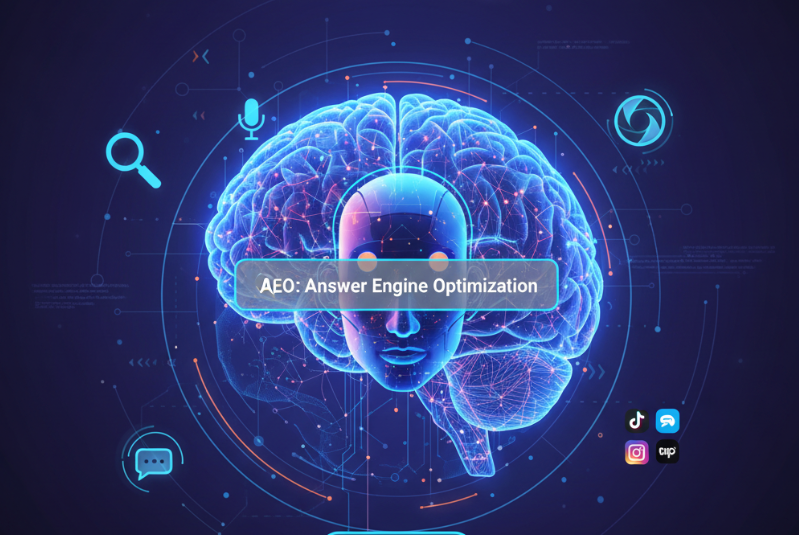The Future of Search: 5 AI Discoveries Changing SEO Forever
Search is no longer just about Google rankings and keywords. The rise of AI-powered engines like ChatGPT and Perplexity has changed how people discover and consume information. Whether you’re selling smartphones, fitness equipment, SaaS tools, or kitchen appliances—the rules of visibility are being rewritten.
If your content strategy is still focused on traditional SEO, you’re already behind. Here are five discoveries that explain how AI search engines really work—and how you can adapt across any industry.
1. Reciprocal Rank Fusion: Clusters Beat Keywords
Google traditionally matched queries to individual pages. AI engines do something different: when a user asks “Which smartphone should I buy under $500 for photography and gaming?”, the engine doesn’t run just one search. It runs multiple related searches—best budget phones, best gaming phones, best camera phones—and merges them using Reciprocal Rank Fusion (RRF).
Content that consistently appears across these variations gets prioritized.
What this means for you: success isn’t about one keyword—it’s about owning the entire topic cluster.
How to adapt:
Create content hubs that link guides, reviews, comparisons, and FAQs.
Cover every angle of your category (e.g., “Best laptops under $1,000,” “Best laptops for students,” “Best laptops for video editing”).
Interconnect your pages so AI sees you as the authority.
2. Freshness Is the New Ranking Powerhouse
AI search algorithms give heavy priority to newly updated content. Tests reveal clear time-based boosts:
Last 1 hour: maximum boost
Last 6 hours: high boost
Last 24 hours: strong boost
Last 48 hours: moderate boost
A great review from 2023 quickly loses visibility against updated 2025 content.
What this means for you: updating matters more than perfection.
How to adapt:
Add “Updated September 2025” or “2025 Edition” to titles.
Refresh content with current pricing, specs, and examples.
Update product comparisons whenever new models launch.
Revise metadata and links to show recency.
Example: Instead of “Best Smartphones of 2023,” use “Best Smartphones Under $500 – Updated September 2025.”
3. YouTube’s Dominance in AI Citations
Perplexity’s system files show that YouTube is explicitly prioritized as a main data source. That means when someone asks “Which smartwatch under $200 has the best battery life?”, AI engines often pull answers from YouTube reviewers rather than blogs.
What this means for you: written content alone isn’t enough—video is now central.
How to adapt:
Create videos titled in natural question form, like:
“Which smartphone under $700 has the best camera in 2025?”
“Is the MacBook Air worth $999 in 2025?”
Write detailed descriptions with key specs and summaries.
Build playlists for clusters: “Best Budget Phones,” “Fitness Tracker Reviews,” “Laptop Comparisons.”
Optimize for voice-style queries (the way people talk to AI assistants).
4. The Rise of Long-Form Prompts
Traditional Google searches are short—2–3 words like “budget blender.” AI prompts are long—averaging 42 words. Example:
“Can you recommend a blender under $100 that’s good for smoothies, easy to clean, and won’t take up too much counter space?”
What this means for you: content must answer full, conversational questions, not just product names.
How to adapt:
Mine Google’s “People Also Ask,” Reddit, and Quora for natural long questions.
Build FAQ sections that mirror how people ask AI.
Write content around use-cases, e.g., “Best laptops under $1,000 for college students,” not just “best laptops.”
Use conversational phrasing that matches how buyers actually search.
5. Multi-Channel Presence Wins in AI Search
AI engines don’t just combine search queries—they also cross-check multiple platforms. Brands and creators consistently active across YouTube, LinkedIn, Reddit, Medium, X (Twitter), and their own websites are more likely to be cited.
What this means for you: being visible everywhere creates compound authority.
How to adapt:
Publish core content on your website.
Adapt versions for LinkedIn (professional insights), Medium (long reads), Reddit (community engagement), and YouTube (visual reviews).
Share condensed versions on X (Twitter) with discussion threads.
Cross-link between platforms to signal credibility.
Example: If you review a smartphone:
Blog: “Best Smartphones Under $700 – September 2025 Edition”
YouTube: Full video review with performance tests.
Reddit: Discussion in r/Smartphones about pros/cons.
LinkedIn: Insight post on pricing trends in smartphones.
X: Quick thread comparing battery life across three models.
Roadmap to Adapt
Months 1–2: Audit and update your top 20 pieces of content with 2025 data and edition markers. Map topic clusters.
Months 3–4: Expand into new platforms—launch YouTube, post on Medium and LinkedIn, engage on Reddit.
Months 5–6: Go AI-first—optimize titles for conversational queries, add FAQ sections, implement schema markup, create video versions.
Metrics That Matter Now
Google rankings alone don’t tell the story anymore. Instead, track:
AI Citation Frequency – how often AI engines reference you.
Cross-Platform Visibility – consistency across multiple ecosystems.
Conversational Coverage – can your content answer long, natural prompts?
Topic Cluster Dominance – depth across related categories.
Freshness Score – how recently content was updated.
TL;DR
AI search isn’t an upgrade to Google—it’s a new paradigm. Success now requires:
Topic clusters, not single keywords
Fresh updates over one-time perfection
Video-first strategies, especially on YouTube
Conversational, long-form query coverage
Synchronized, multi-channel presence
Whether you’re selling smartphones under $500, laptops under $1,000, or fitness trackers under $200, the formula is the same: adapt or disappear.
The future of search is already here. When consumers ask AI “Which product should I buy?”—will it be your brand in the answer?
